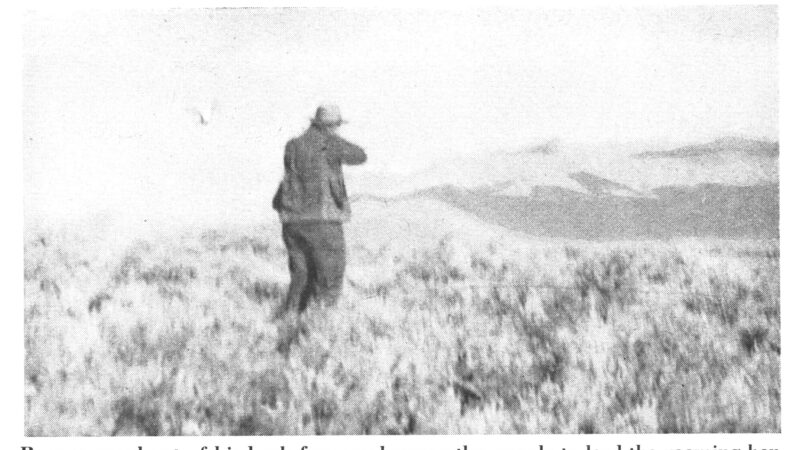23 Dirty Turkey Hunting Myths
Turkey hunting is plagued with old wive’s tales, folklore, and myths. Some of this is harmless. Some of it might have a good explanation. But some of the misbeliefs might cost you a punched tag this spring.
Plus, the truth still matters. So, in the spirit hunting with better information, here are 23 turkey and turkey hunting myths to ditch right now.
The 23 Dirtiest Turkey Myths
Myth 1: Turkeys see color like we do.
Some think turkeys see in color just like we do, but they don’t. Turkeys do have great color vision, but not in the way we experience it. The layout of cones and rods in their eyes are different from ours. While the exact composition of their vision isn’t known, it’s believed they see color, but much differently than humans. That said, just like whitetails and other prey animals, their eyes detect motion extremely well.
Myth 2: Turkeys have no sense of smell.
Wild turkeys certainly don’t have a sense of smell like whitetails, but they aren’t nose blind, either. Turkeys do, in fact, have a slight ability to smell. Of course, it isn’t significant enough to impact how you hunt them.
Myth 3: Turkeys hate or love the rain.
Some say turkeys hate the rain. Others say they love it. Neither are true, really. The reasons wild turkeys spend so much time in open fields during rainstorms are twofold. First is security. The wind and rain make it difficult to see within cover. Second is food. Bugs and grubs head to the surface when the water table rises. I’ve watched gobblers rip off gobble after gobble in the rain, too. They didn’t seem to mind it too much. Read about tips for hunting turkeys in bad weather here.
Myth 4: Turkeys, especially poults, drown when they look up in the rain.
Turkeys young and old do not drown by looking up when it rains. If this were true we’d find dead turkeys all over the place after heavy rains. They do, however, head for open fields when the drops start falling (unless they are roosted).
Myth 5: Turkeys always roost in the same tree every night.
In prairie settings where roost trees are greatly limited, this myth can hold up. That said, throughout most of America, it usually isn’t true. A small number of turkeys routinely roost in the same exact trees, but this is the exception and not the norm. Wild turkeys almost always rotate through numerous roost trees and even roost areas. Plentiful numbers of local birds can make it seem like a roost is being used every evening by the same turkey.
Myth 6: Once in the tree, turkeys don’t change roosts.
Turkeys do like the roost limbs they fly up to. But that doesn’t mean they’ll remain there. I’ve watched as roosted turkeys moved from one limb to the next. I’ve also roosted a turkey in late evening, went back the next morning, and there wasn’t a turkey in sight. Without question, turkeys sometimes change roost limbs, or even roost trees, after flying up.
Myth 7: A roosted gobbler is a guaranteed bagged bird.
Just because you roost a turkey doesn’t mean you’re guaranteed to kill it the next morning. In fact, I rarely kill roosted turkeys. Most other hunters have told me the same.
Myth 8: Warm late-winter weather greatly speeds up the breeding cycle.
An unseasonably warm late-winter or early spring might get turkeys to gobble and strut a little more, but that doesn’t mean breeding will occur any sooner (measurably speaking). The wild turkey breeding cycle is driven by photoperiod (daylight length), and that doesn’t change much year to year.
Myth 9: Calling heavily will keep turkeys on their roost limbs.
Some say that continuous calling to a roosted gobbler will keep it on the limb later into the morning. That isn’t true. If that turkey refuses to fly down, it’s because it’s seen or heard something it didn’t like. Even if it’s gobbling, it might remember something from earlier.
Myth 10: Call-shy turkeys quit responding to calling.
It’s long been believed that calling too much can result in call-shy turkeys. That said, hushed turkeys are now attributed to gobbler removal, increased hunting pressure, and elevated predator populations. It is not due to increased calling by turkey hunters. Ever heard a big spring turkey flock? They really make a ruckus.
Myth 11: Hens can’t gobble or strut.
Think that hen turkey can’t gobble or strut? Think again. Still don’t believe me? Watch it happen in this video. While very rare, it’s believed to be a show of dominance toward other hens.
Myth 12: Gobblers don’t yelp.
Gobblers don’t just gobble. They make other vocalizations, too. One of these is the tom yelp. This three-noted yelp-yelp-yelp has the same general structure as a hen yelp, but it’s much deeper, raspier, at a slower pace.
Myth 13: Turkey poop always looks the same.
Much of the time, male turkey excrement is J-shaped. In contrast, hen poop is usually spiral- or popcorn-shaped. These truths aren’t 100% accurate, though. Diet, health, and other factors can impact the appearance of wild turkey poops, altering said waste from the typical expected forms listed above.
Myth 14: That short, broken beard is a case of beard rot.
Some adult turkeys might be 2-plus years old with a full fan and a partial or no beard to show for it. Furthermore, these are almost always discolored, sometimes reaching a blondish coloration. The common myth attributes this to a condition called “beard rot.” However, it’s really just a melanin deficiency.
Myth 15: Turkeys won’t ever cross a fence.
Every turkey hunter and their brother has said a turkey won’t cross a fence. And while fences can cause turkeys to hang up, I think it’s less about the fence and more about them not really wanting to be on the other side of it. Think about it. If a turkey is already on the other side of the fence, it likely has reasons why it prefers to be on the other side. Furthermore, most properties I hunt have an abundance of fencing. One is completely woven wire, and every day, turkeys come out of the woods, fly up to the fence posts, and hop down to the other side before waddling down the hill toward the cow pasture I set up in. Why? Because they already want to be there.
Myth 16: Turkeys won’t ever cross water.
I’ve seen gobblers hang up at streams, creeks, and rivers. I’ve watched them fly those same waterways. Likewise, wild turkeys aren’t swimmers, but they can swim. See it for yourself right here. Without question, turkeys do cross, and even sometimes swim, across water.
Myth 17: Your calling must sound perfect.
No, your turkey calling doesn’t have to sound perfect. It doesn’t need to be turkey-calling-championship worthy. In fact, even wild turkey hens don’t always have the best voices. Just listen to wild birds. Some of them sound like a 5-year-old screeching toys on a tile floor. All that said, the cadence of a wild turkey’s call is important, so hunters should focus on getting this right.
Read Next: Turkey Calling Tips
Myth 18: You can’t call a turkey down a hill.
It’s true — I’ve had better luck calling turkeys uphill than downhill. But I’ve called turkeys downhill, too. Think about it — turkeys must walk down hills at some point, or they’d never leave the hilltops. Usually, when a gobbler won’t come down the hill, it’s because he’s in a “strut zone” and expects the hen to come up to him.
Myth 19: Henned-up longbeards can’t be coaxed into range.
Henned-up gobblers already have the real deal. That doesn’t mean they won’t leave it to find something new, though. While the odds aren’t always great, if you play those cards right, you just might pull a longbeard off a real hen. If you can’t pull that gobbler away, try calling to the hen instead.
Myth 20: You can’t call back a spooked turkey.
Just because a turkey is spooked doesn’t mean you can’t call it back into range. Sometimes, you can call a bird right back after killing the gobbler it was running with. Or, if the turkey is really spooked, give it an hour or two, circle around from another direction, and go at that turkey again. You might be able to call it in.
Myth 21: Jakes successfully breed.
Think a jake makes a good daddy? Guess again. The vast majority of jakes cannot successfully breed. While they can conduct the ritual, most do not have viable sperm counts.
Myth 22: Beard size is indicative of age.
A lot of turkey hunters focus on the beard, especially newer turkey hunters. But the beard isn’t the best indication of age. Looking at the spurs is a better way to estimate the age of a gobbler. Typically, rounded off spurs belong to jakes, 4/8- to 7/8-inch spurs are on 2-year-old turkeys, 1- to 1 3/8-inch spurs belong to 3-year-old turkeys, and 1 4/8-inch and greater spurs are found on 4-plus-year-old gobblers. But this isn’t always the case, either.
Myth 23: You can’t bag a bird beyond 40 yards.
Many old-timers will tell you not to shoot at a turkey beyond 40 yards, and that it’s unethical to do so. While this was and still is good advice if you’re hunting with older gear, modern turkey shotguns, turkey loads, choke tubes, and red dot sights have made it possible to make shots beyond 40 and still be lethal and ethical. The key is to pattern your shotgun and find your own maximum effective range. Remember, a good turkey killing pattern is 100 pellet strikes within a 10-inch circle.
The post 23 Dirty Turkey Hunting Myths appeared first on Outdoor Life.
Source: https://www.outdoorlife.com/hunting/turkey-hunting-myths/




